It was 2019, and I needed a holiday — somewhere different, somewhere unexpected. Asia has long intrigued me, but I had never visited South Korea or Japan. So I faced a delightful dilemma: Seoul or Tokyo? In the end, Seoul won. It felt slightly more enigmatic, less trampled by tourism at the time, and promised something I couldn’t quite define.
A line in a guidebook had caught my eye: “Although South Korea’s capital city is still largely an enigma to the Western world, growing numbers of travellers are beginning to absorb the unique energy of this spellbinding metropolis.” That word — enigma — hooked me. There’s a quiet allure in places that hold their secrets close, and I yearned to experience it alone. To scratch beneath the tourist veneer of this fascinating country.
Ten days later, I left changed.
- Seoul for the Soul: Why It's Perfect for the Midlife Solo Traveller
- Moments That Stayed With Me
- What to Do in Seoul (Without Breaking the Bank)
- Navigating Solo: Confidence in the Everyday
- What I Didn't Expect…But Loved
- Would I Go Again?
- Related Posts
- Ready to Plan Your Own Solo Journey?
Seoul for the Soul: Why It’s Perfect for the Midlife Solo Traveller
Seoul surprised me with its balance of ancient culture and cutting-edge modernity, but even more so with its quiet welcome. As a solo woman in midlife, I never once felt unsafe, awkward, or out of place. The city is clean, organised, and deeply respectful.
From the moment I landed at Incheon International Airport, I was impressed. I took a bus into the city, expecting nothing remarkable. But the driver, in a simple gesture of grace, personally loaded and unloaded each passenger’s luggage. At every stop, he leapt up from his seat to retrieve bags with a bow. That small act set the tone for the kindness and quiet dignity I encountered again and again.
My Airbnb — a neat little studio in a modern building just off Insadong — was ideal. A comfy bed, bathroom and kitchenette, a washing machine, and a convenience store downstairs. And just minutes from a subway station.
Seoul’s subway network is vast, efficient, and easy to navigate — even for someone who stumbles over the pronunciation of “Gwanghwamun”. English signage is plentiful, and the T-Money transport card made travel effortless. And the cheerful jingle announcing the arrival of every train was a delight!
Whether wandering ancient palace grounds or sipping coffee in a themed café, I never felt conspicuous. Seoul seemed to say: you belong here, just as you are.
Moments That Stayed With Me
A City Unfolding Beneath My Feet
One afternoon, I climbed the fortress wall on Mount Ingwansan. Though still within the city limits, the trail felt remote and peaceful. From the summit, Seoul stretched below like a city made of Lego bricks — orderly, colourful, sprawling. The descent was a scramble down rocky tracks, but I felt light and elated.
Toward the bottom of the hill, the rocky trail merged into narrow streets winding through a residential area — multi-storey apartment blocks, a primary school and pre-school centre with children playing happily in the secure grounds, and open green spaces with colourful playgrounds. This was clearly a family-oriented district.
Once back on the main street, it took me a moment or two to orient myself (using Google maps) and find my way back to the metro station. It seemed as though I had travelled far out of the city that day, but in fact, I was just two stops from where I was staying.
This was Seoul in microcosm: challenging, layered, unexpectedly beautiful.
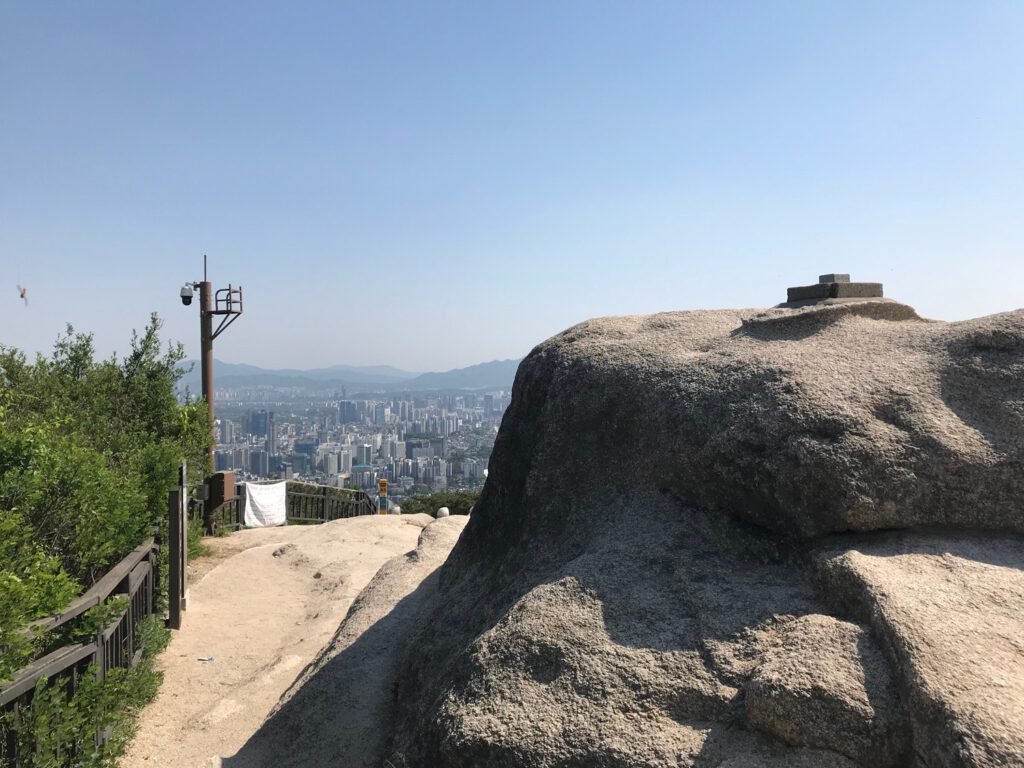
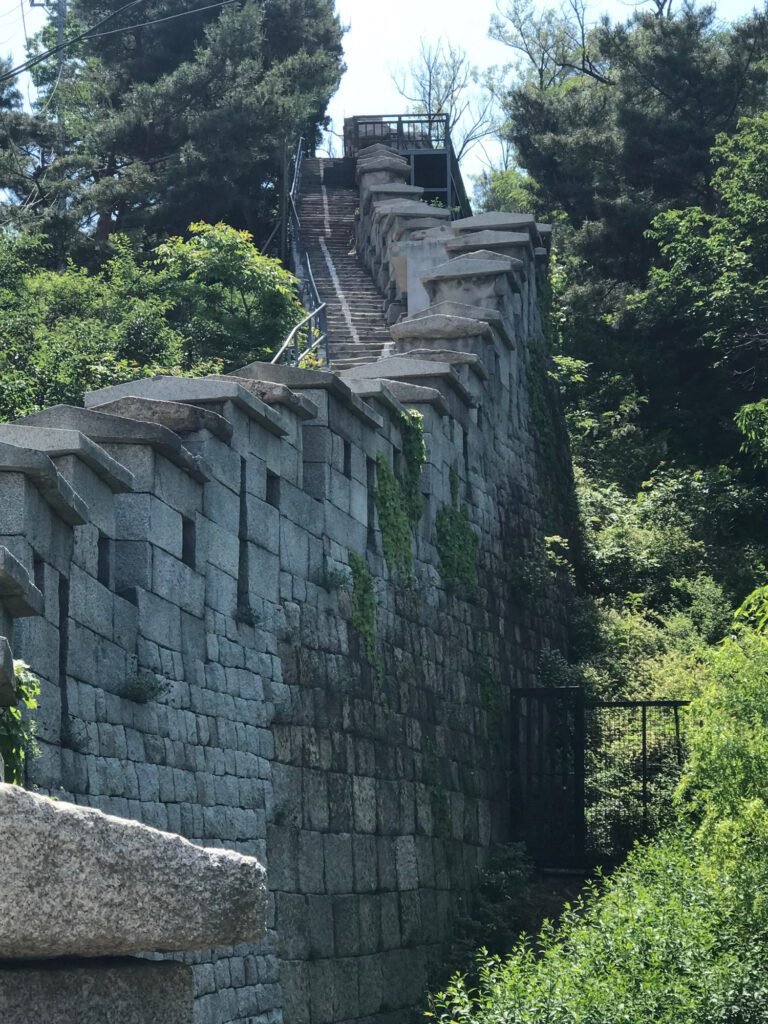
Cafés with character (and creatures)
Seoul has a thing for themed cafés, and I couldn’t resist visiting a few. I stroked sheep (yes, sheep!) at the Thanks Nature Café, peered at lounging cats, slobbery dogs, and curious raccoons at others. One café — cheekily named the Poop Café — took things a little too literally, but the humour was infectious.
A more elegant stop was Heaven on Top inside the Dongdaemun Design Plaza: strawberry cream latte, sleek curves of modern architecture, and a touch of design heaven.
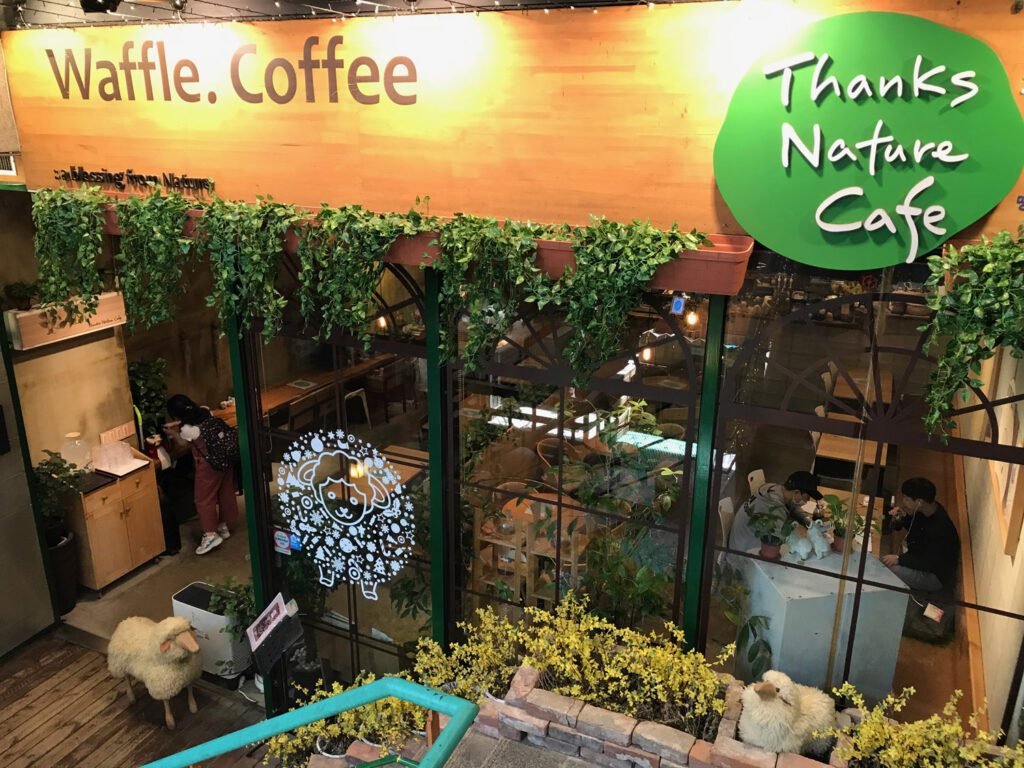
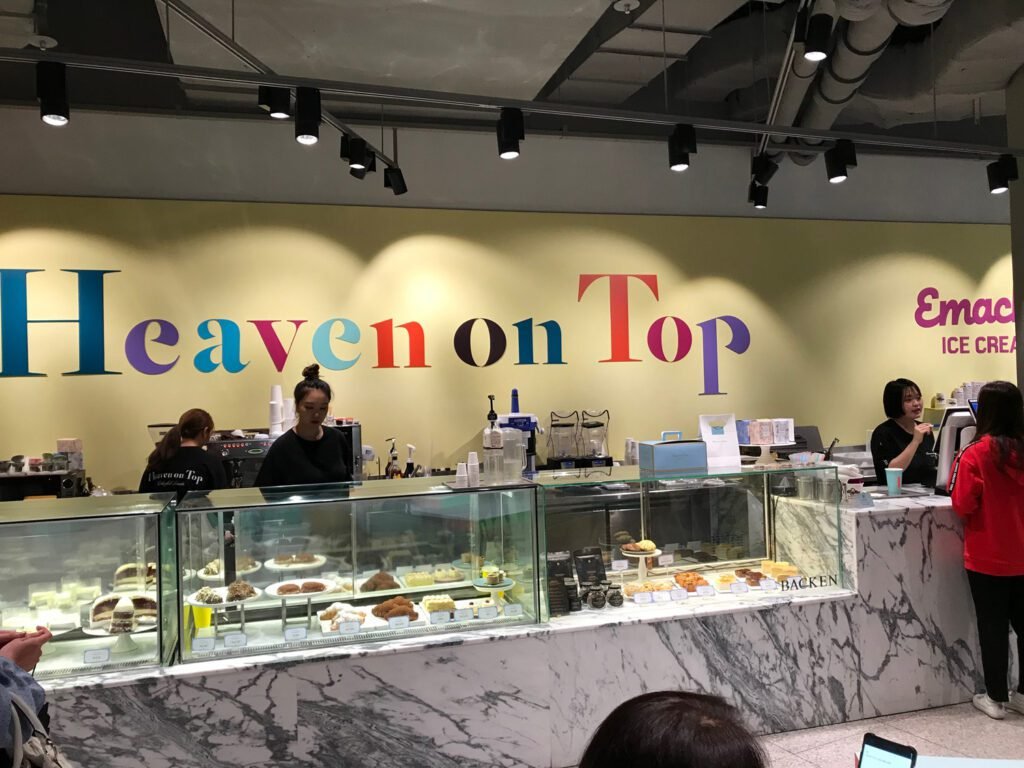
Art That Speaks Without Words
At the world-class Sejong Performing Arts Centre, I watched the Korean Contemporary Dance Company perform a contemporary ballet titled “No One, Not There”. The story — of a Korean girl trapped in the mind of an elderly woman, searching for her family torn apart by war — was haunting, tender, and stunningly performed. I paid less than A$15 for the ticket, but the experience was priceless.
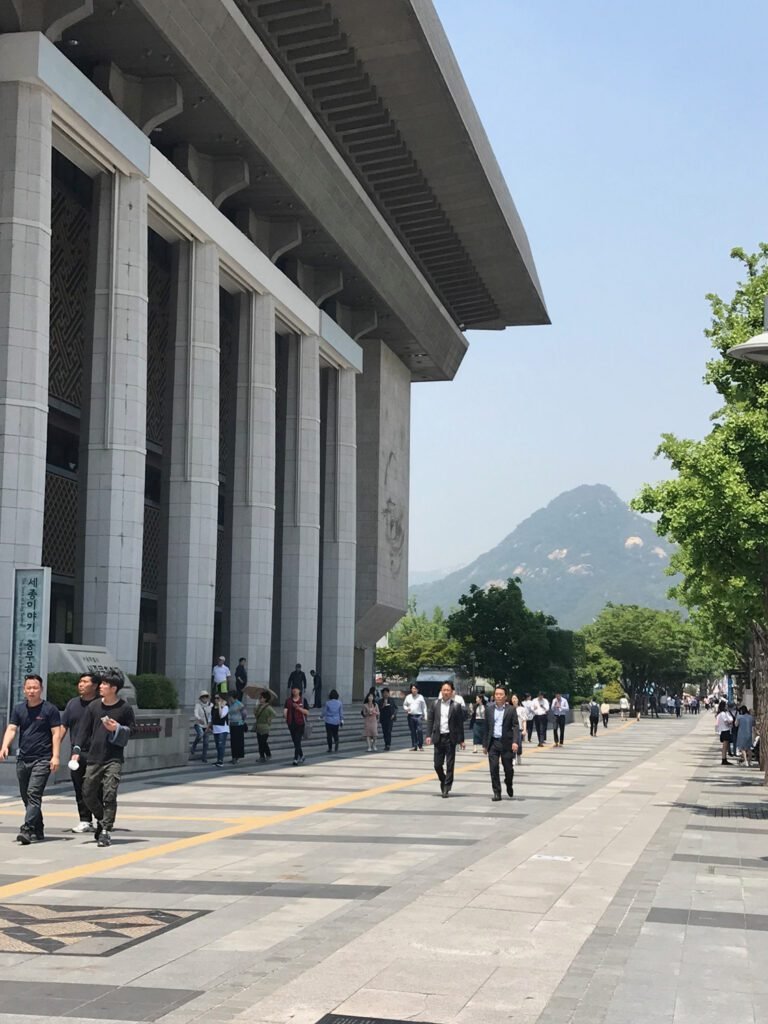
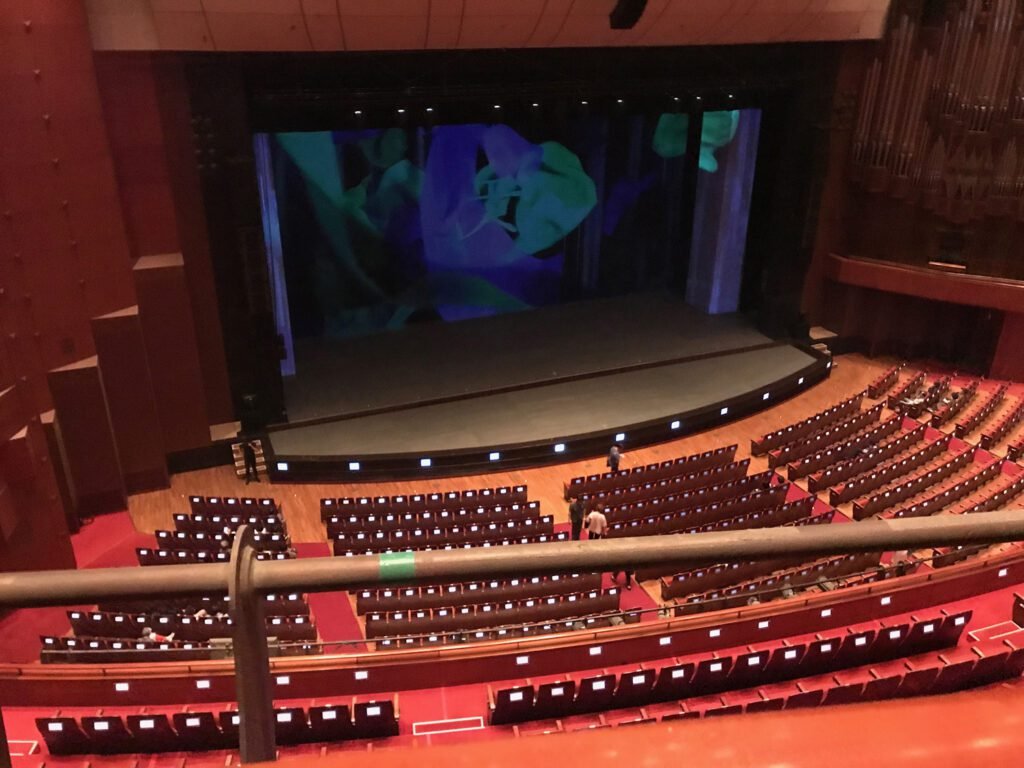
Serene Shrines and Unexpected encounters
Late one afternoon I visited Jongmyo Shrine, a place of hushed reverence where the spirits of Joseon Dynasty royals are honoured. I joined the last guided tour of the day — in Korean, unfortunately (I had missed the English language tours). But as luck would have it, a kind stranger, a Korean man living in Sydney, quietly translated for me as we walked. Yet another act of gentle generosity.
The light slanted golden across the courtyards, and as the tour ended, a raccoon scurried across the path. A quiet moment of delight, totally unplanned.
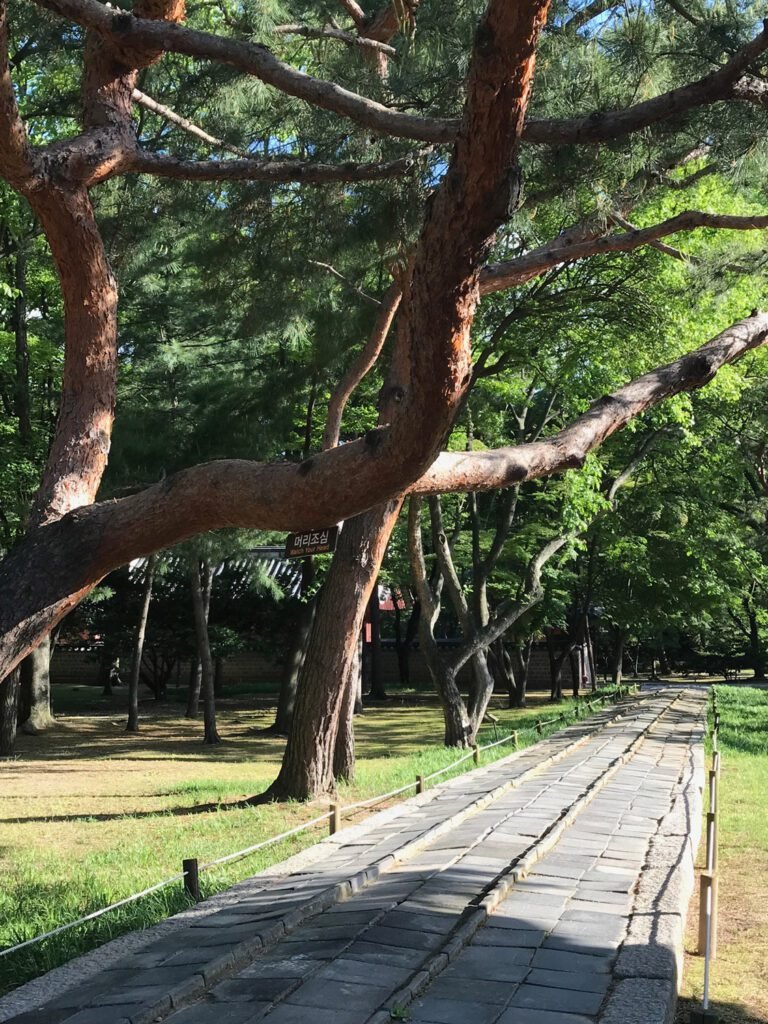
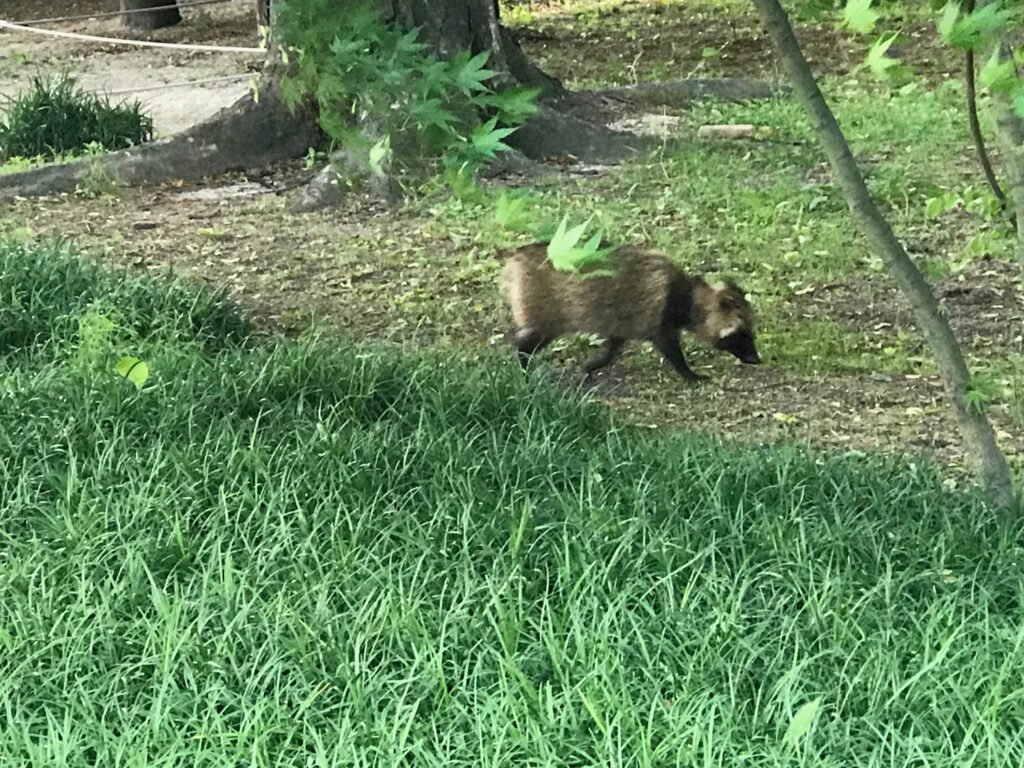
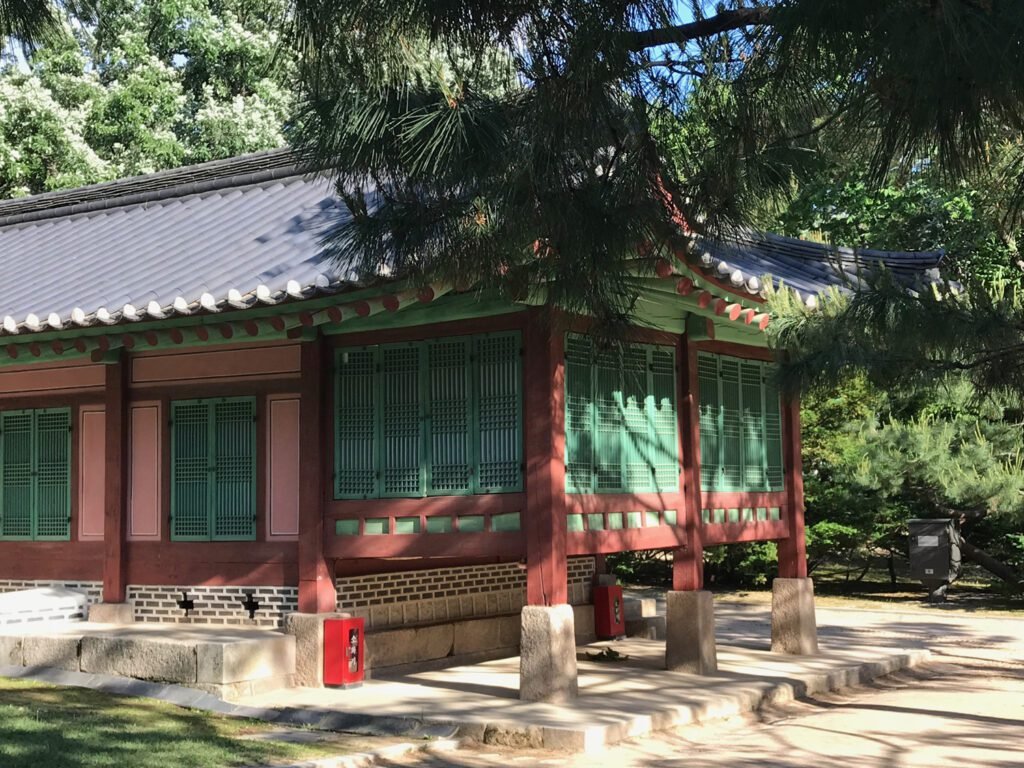
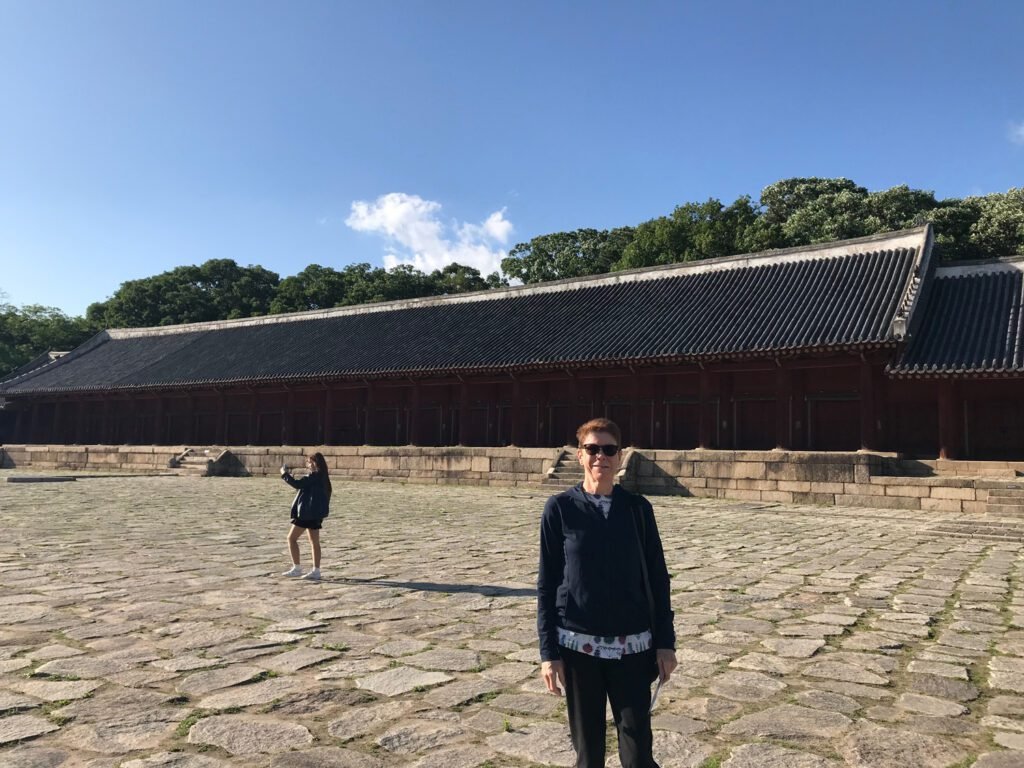
A Glimpse Across the Border
The day trip to the DMZ (Demilitarised Zone) was sobering and surreal. Visitors can only go there on guided tours — passports were checked, security was strict, and the sense of tension palpable as we were stopped at the entrance while soldiers boarded the bus to check our credentials.
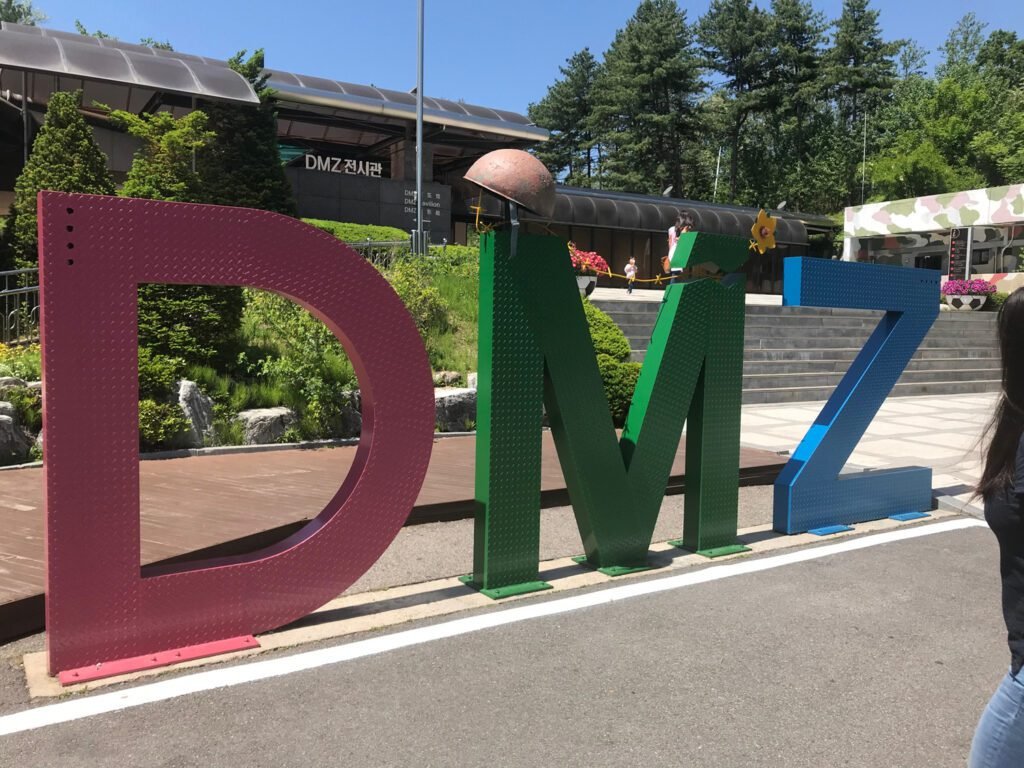
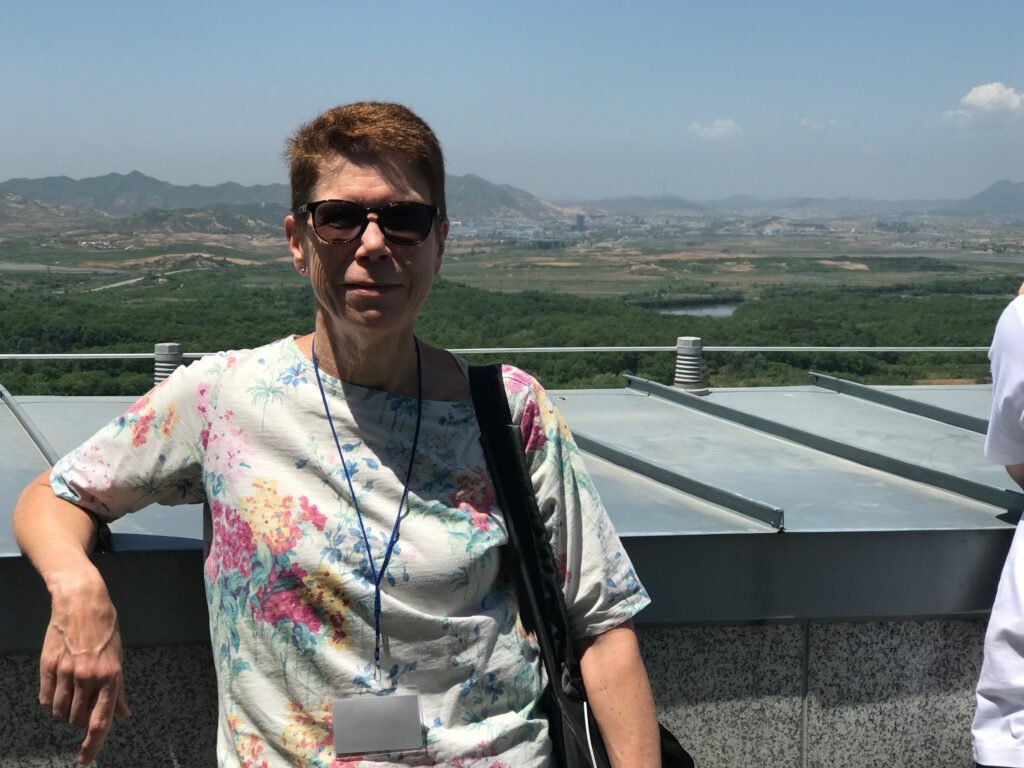
On the way, we descended into the Third Infiltration Tunnel — stooping and bending almost double as we walked down the narrow stone tunnel. Built by North Korea in order to invade South Korea, there’s now a secure barrier at the north-south border. Visitors can use the small hole cut into the barrier to see through to the other side.
At 265 metres long (on the South Korean side) and plunging 73 metres underground, it is not for the faint-hearted or claustrophobic, but a fascinating and somewhat sobering experience. No photography is allowed inside the tunnel and security is strict.
At the DMZ, we gazed out from the observation deck, across the river toward North Korea, and the “city” just across the border. “No one lives in that town,” the guide told us. “It’s just for show.” I’m not sure if that’s true, or not, though it seems likely. But what stayed with me wasn’t the politics — it was the air of sadness and reminder that peace is fragile.
What to Do in Seoul (Without Breaking the Bank)
Cultural and Calming
Gyeongbokgung Palace
Step through the grand gates of this 14th-century palace — the first built in Seoul during the Joseon dynasty — and time slips away. Time your visit for the changing of the guard ceremony, a striking ritual of vibrant traditional robes, conch shell horns, and enormous drums.
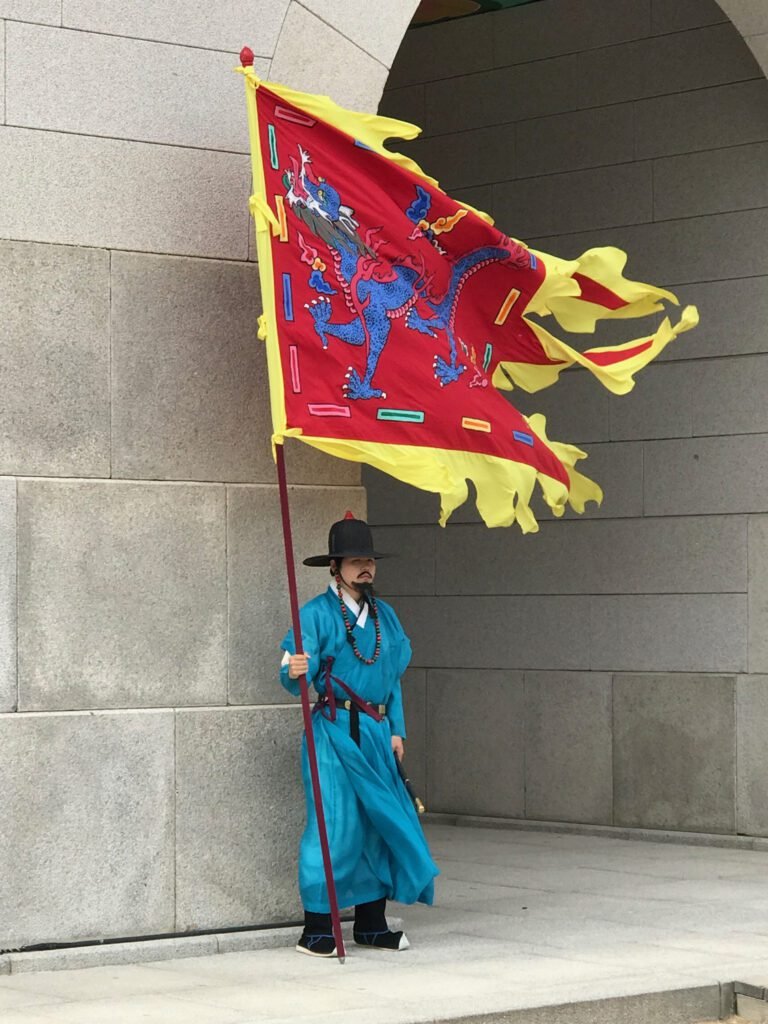

After the crowds disperse, wander deeper into the quieter back sections of the palace grounds. You’ll find shady courtyards, secret pavilions, and a surprising stillness rarely witnessed by the tourist masses who never make it that far.
Jongmyo Shrine
This UNESCO-listed Confucian shrine — in use for over 600 years — is where the spirit tablets of deceased kings and queens from the Joseon dynasty are enshrined. Entry is by guided tour every day except Saturdays (non-guided entry on Saturdays). Tickets are available at the gate, are very reasonably priced at just a few Korean won, and offered in both Korean and English. But even if the narration is in Korean (as it was for me), the atmosphere speaks for itself. Take public transport, or walk to the shrine, rather than join one of the overpriced commercial tours.
Walk the long stone pathways beneath ancient trees, and explore Jeongjeon (the main shrine) and Yeongnyeongjeon (the Hall of Eternal Peace), set in this glorious landscape, which reinforces pungsu principles — a balance of natural elements.
Bukchon Hanok Village
Perched between two palaces, this charming hillside district is a step back into traditional Korean life. Winding laneways, tiled rooftops, and wooden hanoks (traditional houses) now mix with artisan shops and cafés. Touristy? Yes, a little. But still beautiful — especially in the soft light of late afternoon. For a unique experience, rent hanbok (traditional Korean clothing) and pose for photos, adding to the sense of time-travel theatre.
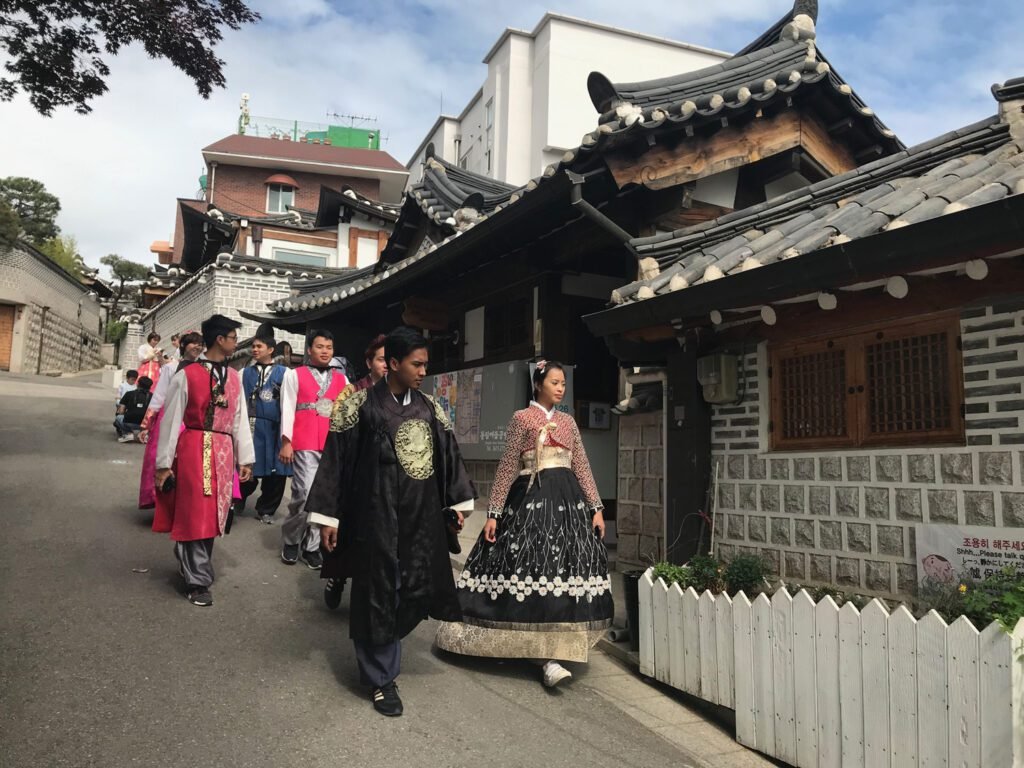
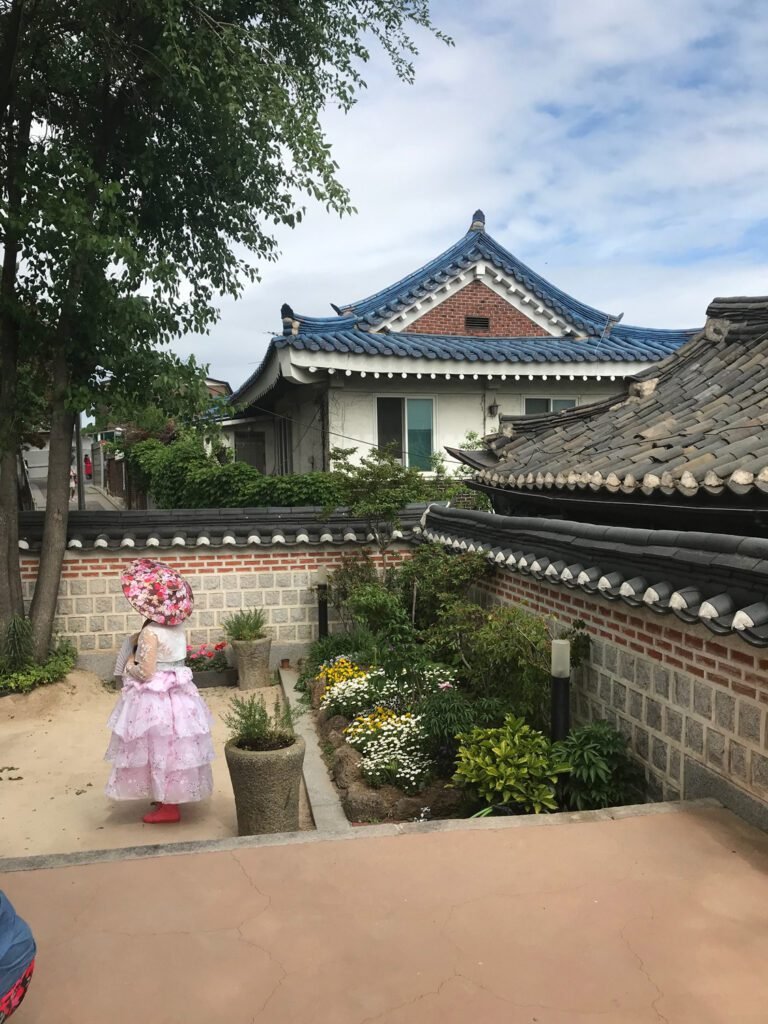
Insadong
Insadong — one of the best areas to experience Korean culture — is ideal for a slow wander. The streets are lined with galleries, teahouses, calligraphy shops, and stores selling everything from handmade paper to delicate ceramics. It’s a lovely place to sit with a tea or Korean snack and people-watch as students, tourists, and locals all blend into the rhythm of the surroundings.

Calligraphy and Art Classes
Several temples and community centres around Seoul offer drop-in cultural classes — calligraphy, tea ceremony, or paper-making — often at little cost. Even if you don’t join in, you can often watch a skilled artist hand paint characters with quiet concentration — in itself, a form of meditation. Keep an eye out for posted signs near temples or traditional houses.
Engergising and Fun
Insadong After Dark
By day, Insadong is quiet and traditional. But after sunset, the alleys come alive. Tiny barbeque joints spill onto the pavements, strings of lights twinkle overhead, and the air is filled with the scent of grilled meat, spice, and roasted chestnuts. You can eat well here, even alone, perched on a low stool with sizzling bulgogi or a steaming hot pot. Restaurant and eating house prices vary from relatively inexpensive to high-end.
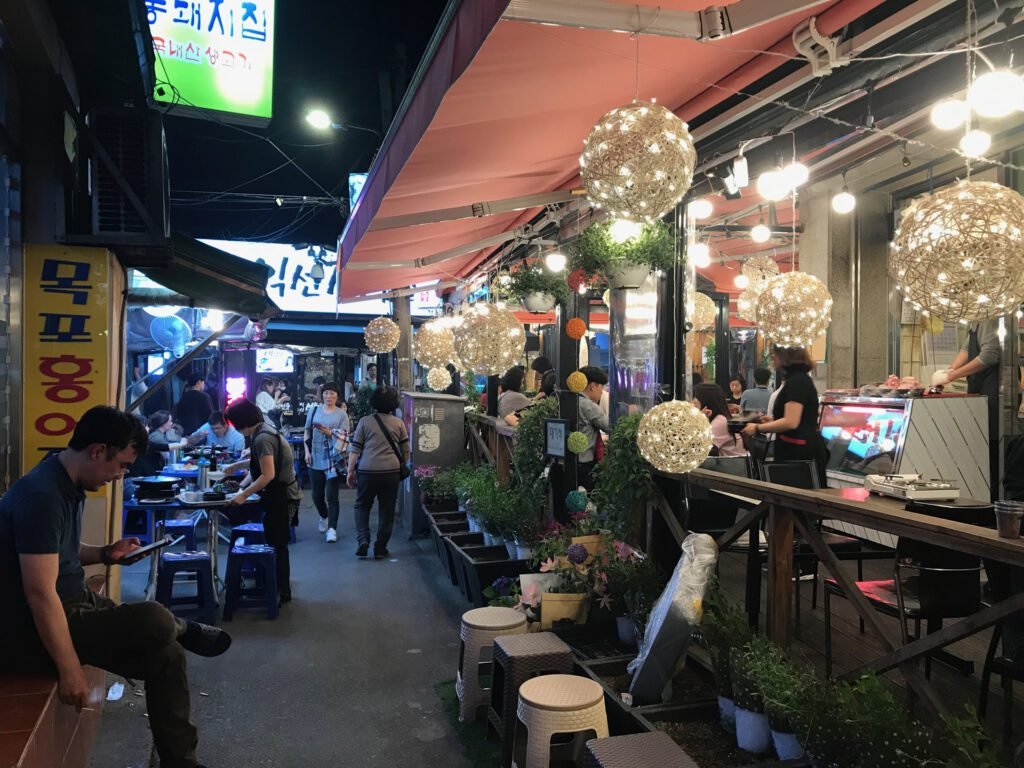
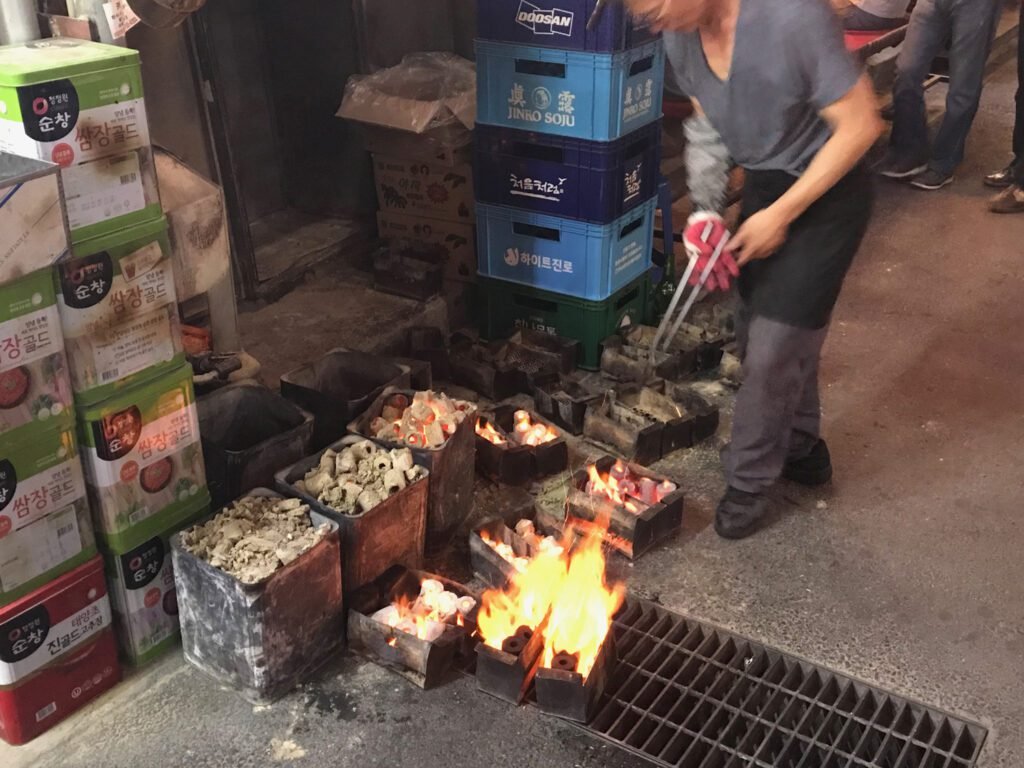
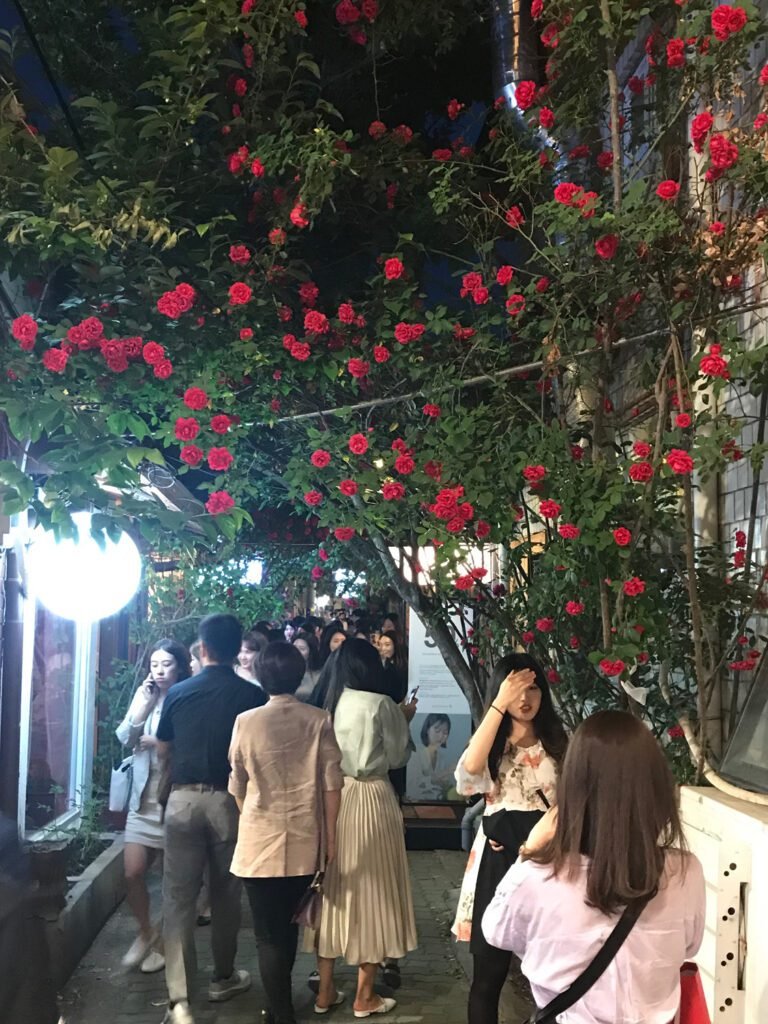
Gwangjang Market
If you love food, this is unmissable. One of Korea’s oldest traditional markets, it’s a sensory feast of noise, colour, and glorious food aromas. Try bindaetteok (mung bean pancakes), gimbap (seaweed rice rolls), or hotteok (sweet pancakes filled with nuts and cinnamon). Pull up a seat at a stall, point to what looks good, and join the local bustle.
Namsan Tower (N Seoul Tower)
For panoramic views without the price tag, catch the bus (or cable car) up Namsan Mountain and walk the final stretch to the tower. At the top, you’ll find fabulous city views, café stops, and the quirky Locks of Love fencing. I took the bus up and hiked part-way down — an easy, scenic walk through forested trails that feel far from the metropolis below.
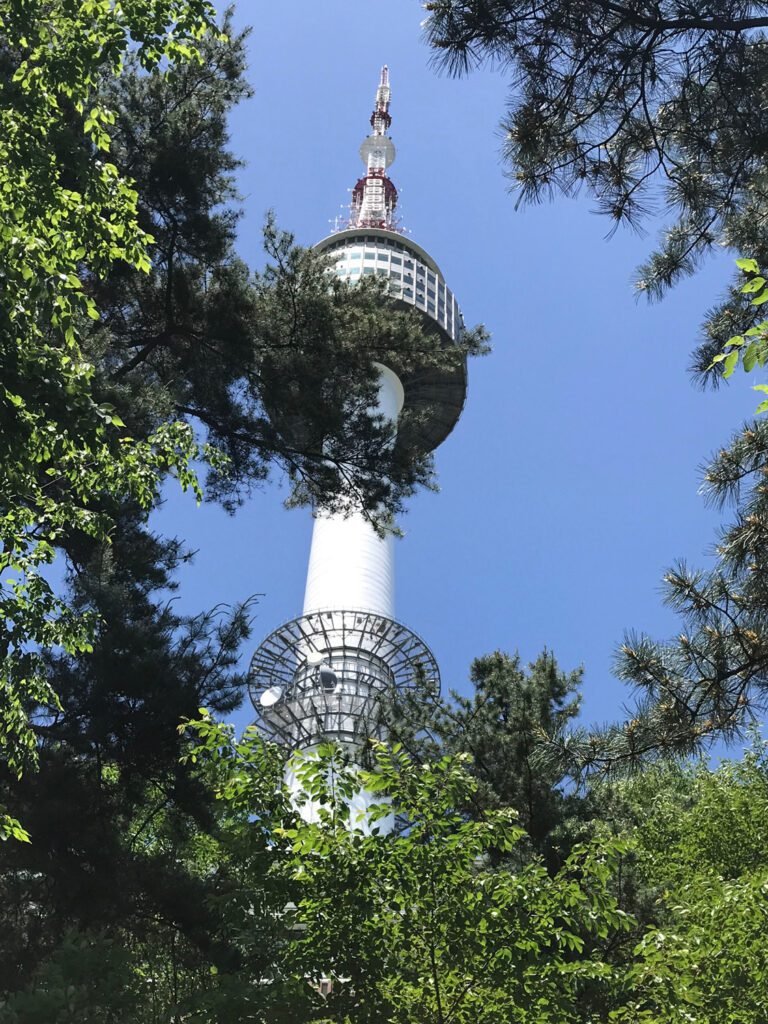
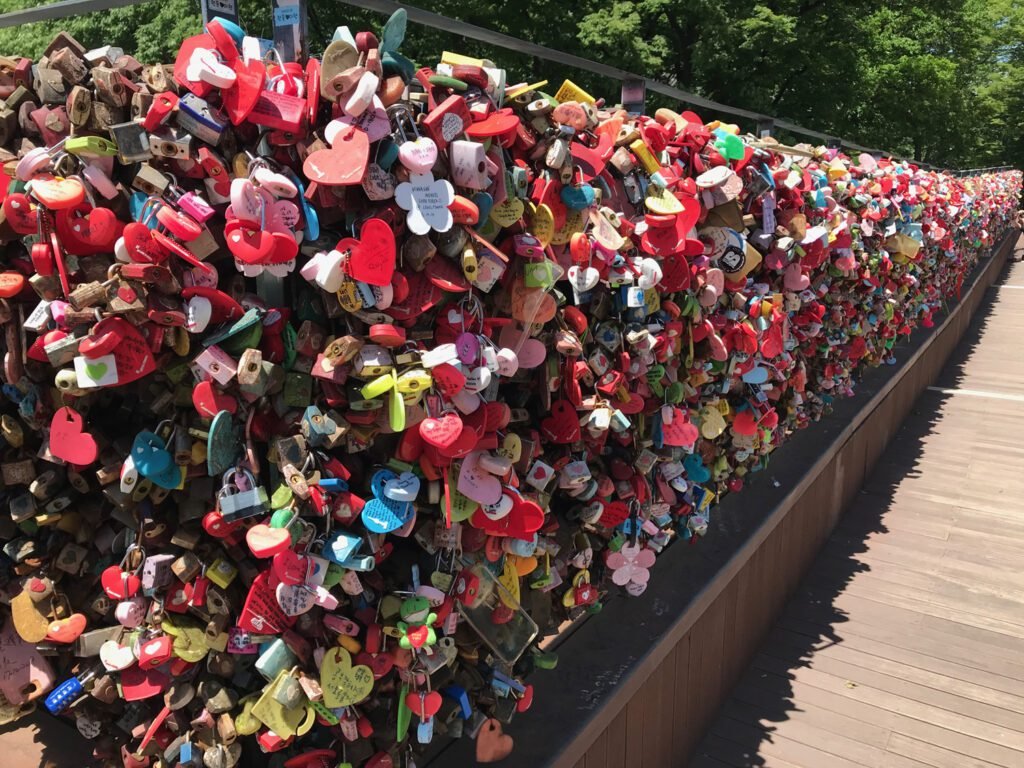
Mount Ingwansan Hike
This fortress-wall hike is short (about 2 hours round trip) but fairly steep — perfect for a budget-friendly half-day adventure. You’ll climb the ancient stone steps that make up part of the old city wall and hug ridgelines, passing military posts and Buddhist shrines (viewed from above), before reaching the top and spectacular views over downtown Seoul.
It’s a free activity, but do bring water, good shoes, and a jacket — the weather can change at short notice. A moderate level of fitness is required, so take your time and enjoy the experience — it feels like a hidden gem tucked away inside the city.
DMZ Day Trip
Not free (but well worth the cost), and visits can only be done on guided tours, it’s a more structured experience that offers insight into Korea’s divided history. On the tour, you’ll visit the DMZ observation deck and visitor centre, peer across the border, visit the Third Infiltration Tunnel, and stand at Dorasan Station — once meant to link north and south by rail. Today, the South Korean trainline northward ends at Dorasan. These tours are a long day, and emotionally weighty, but deeply worthwhile.
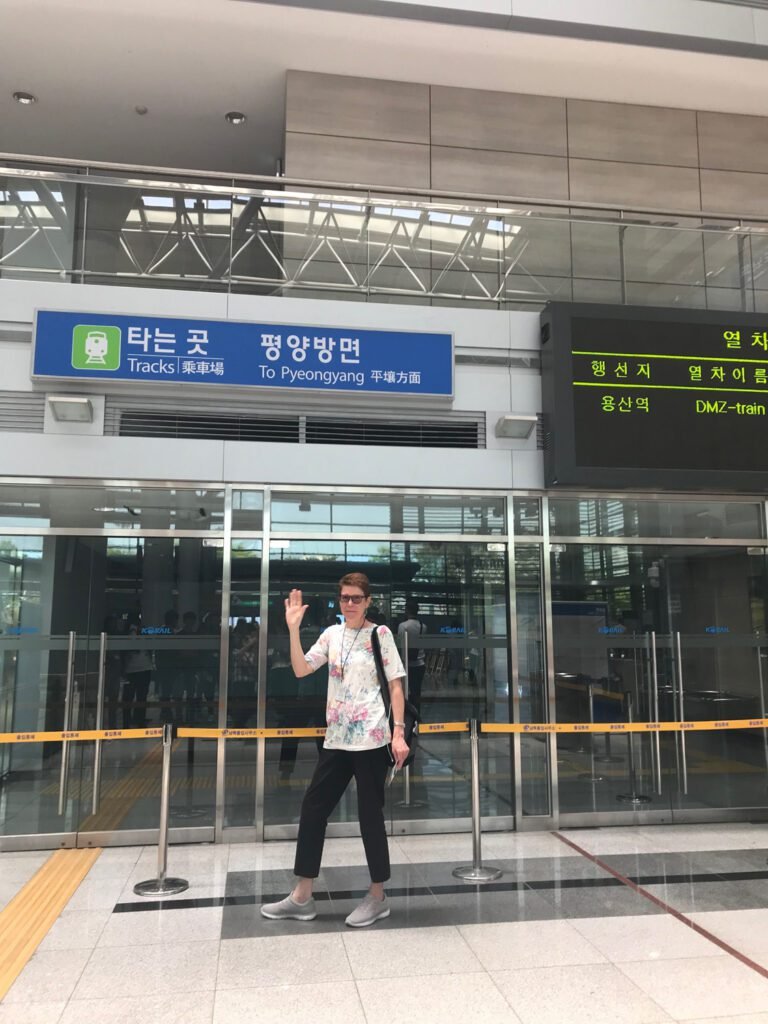
Free or Low Cost
Palace Ceremonies and Public Performances
Many cultural events are held in public spaces — changing of the guard at Gyeonbokgung is free, and outdoor concerts often pop up in front of city halls or arts venues. I stumbled across a rousing K-Pop performance outside the Sejong Performing Arts Centre one evening and stayed longer than I’d planned.
Museums and Galleries
Seoul’s major museums often have free admission or low-cost entry. The National Museum of Korea offers and excellent overview of Korean history and art. The War Memorial of Korea is sobering but profound. These spaces are air-conditioned, spacious, and ideal for a quiet solo afternoon.
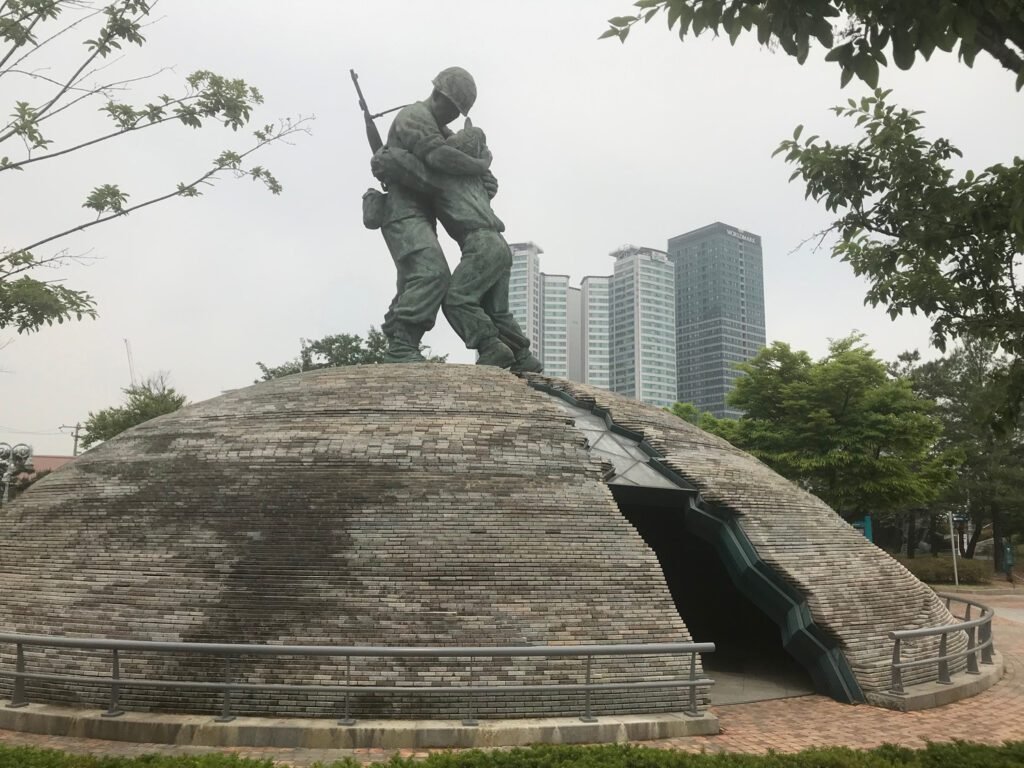
Kyobo bookstore, Gwanghwanun
This isn’t just a bookstore — it’s a cultural landmark. With a café, stationery shops, and a large English-language section, it’s a peaceful place to browse or read for an hour or two. Locals treat it as a second home, and you’ll see people reading everywhere — on the floor, by the windows, tucked into corners. There are several Kyobo Bookstores in the capital, but the largest is at Gwanghwanun — just across from Sejong Performing Arts Centre.
Dongdaemun design plaza (ddp)
The ultra-modern DDP is a sweeping architectural marvel. Inside, you’ll find exhibitions, design markets, and public pianos that anyone can play. I sat in the plaza for nearly an hour watching a young man serenade a gathering crowd with Chopin (reading the music from his iPhone!). It was the perfect way to spend the only rainy day I had while in Seoul.
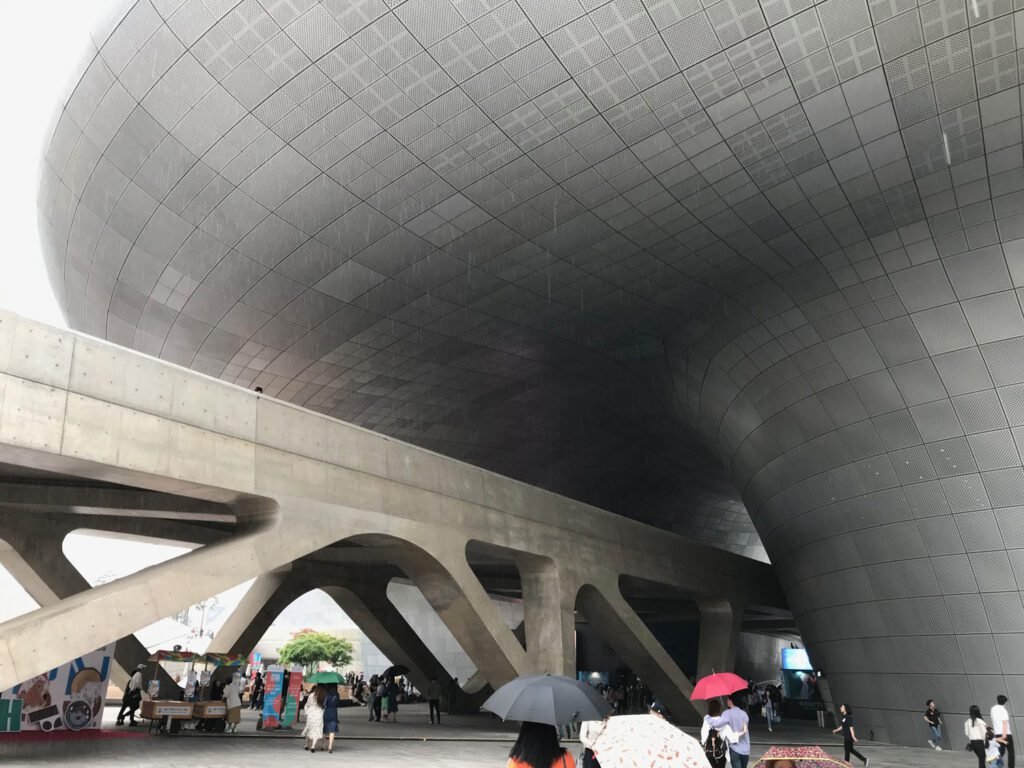
Parks, GARDENS, AND RIVERSIDE WALKS
Seoul offers pockets of greenery and calm tucked between its high-rises. Parks like Banpo Hangang Park along the Han Rier are perfect for a stroll, a picnic, or simply sitting and watching the world go by. Locals jog, cycle, and gather here in the evenings, especially near the Banpo Bridge Rainbow Fountain, which lights up with music after dark.
Other gems include the peaceful Seoul Forest, a blend of woodland, sculpture gardens, and eco-zones. Or the manicured gardens behind Changdeokgung Palace, where you’ll find lotus ponds, pavilions, and shaded walking paths. These green spaces offer a welcome breath between museums and markets — and best of all, they’re free.
Navigating Solo: Confidence in the Everyday
Seoul turned out to be one of the easiest cities I’ve ever explored solo.
The subway system, once you get the hang of it, is a marvel — clean, punctual, and clearly signposted in Korean and English. The T-Money card — a rechargeable smart card for foreigners — makes travel seamless. Easy to purchase from ticket machines at stations, easy to use, and easy to top up when necessary.
My tiny Airbnb apartment provided independence and comfort, but Seoul has something for everyone — from hanok guesthouses to mid-range and high-end hotels. I found dining alone was easy and enjoyable: food markets are full of life, and no one batted an eyelid when I sat alone in a restaurant with a plate of dumplings or bowl of hot bibimbap (Korean rice bowl).
What I Didn’t Expect…But Loved
I hadn’t expected so many quiet moments of connection — like the Korean-Australian man who became my impromptu translator at Jongmyo Shrine, or the bus driver who treated each bag with such dignity. There was something gracious about the way the city moved, even amid its busyness.
But what also surprised me was how seamlessly Seoul blends the ancient and the ultra-modern. One moment I’d be standing beneath a 600-year-old wooden beam in a royal palace, the next sipping a latte in a design café with floor-to-ceiling digital screens. The city doesn’t try to resolve the tension between old and new — it celebrates it.
And then there’s the tech. Fast, free Wi-Fi seemed to be everywhere: in cafés, buses, hotels, on the subway, and even in parks. I was never lost, never disconnected. Topping up my T-Money card or navigating to the next place I wanted to visit felt effortless. And you don’t even need to be particularly tech-savvy to cope.
Seoul’s green spaces also surprised me. Hidden gardens behind palaces, walking trails through forested hills in National Parks that are right within the city boundaries, and neatly-tended parks offering natural pauses within the city’s buzz. I remember sitting in a small park one afternoon, watching elderly locals play games beneath gingko trees, and feeling entirely at peace.
It was this gentle layering — traditional alongside technology, serenity beside sparkle — that left the deepest impression.
Would I Go Again?
In a heartbeat. There’s still so much I didn’t see — temples, parks, street corners I didn’t yet wander. Seoul is layered and lively, gentle and intense. It doesn’t try to impress; it just invites you in.
Seoul gave me everything I could have hope for — and more. But beyond the sightseeing and spectacle, what truly stayed with me was Seoul’s grace: the cleanliness, the quiet respect, the astonishing (and inexpensive) public transport system that ran like clockwork. The internet was to die for, the air was clear, the recycling policies awesome, and the people — though sometimes reserved — were unfailingly polite.
This vast, 21st-century metropolis still pulses with its ancient roots. Somehow, it holds both heritage and hyper-modernity in the same breath. And it does so with confidence.
I hope I’ll return one day. There’s still so much to see, and so many more moments to gather. As the city’s clever slogan reminds you everywhere you go: I SEOUL U — it’s a city of shared experience, of connection. And I felt that, deeply.
You don’t need to speak the language or know the customs (but an understanding of them is always worthwhile). You just need to say Yes to the experience. Seoul will do the rest.
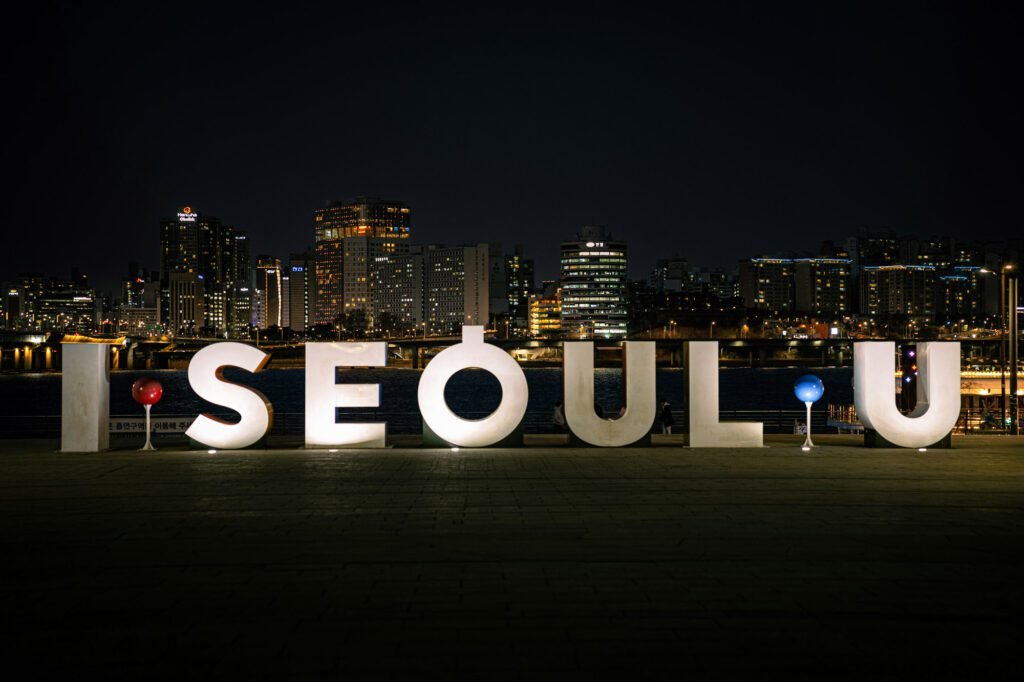
Related Posts
- Not Too Late, Not Too Old: Saying Yes To Solo Travel
- Affordable Travel: Why You Don’t Need to Be Rich to Travel
Ready to Plan Your Own Solo Journey?
Get the book that will both inspire and help with every detail: Go Solo: The Independent Woman’s Guide to Solo Travel After 50.
Available in Paperback and eBook formats.
Disclosure: Some of the links on this page are affiliate links, which means we may receive a small commission (at no further expense to you) if you click through and make a purchase. As an Amazon Associate we earn from qualifying purchases from Amazon websites.

Leave a Reply